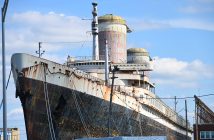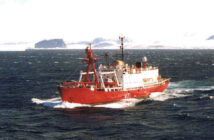The Twilight of an Era
You can’t be a real airplane lover and take satisfaction in seeing the end of a flagship aviation program.
That said, Airbus’ decision last week to halt production of the A380 by 2021 will bring an end to a polarizing program.
It was neither sleek nor particularly attractive, but it was an astonishing aeronautical achievement that was ultimately too big to succeed.
The largest production jetliner in history was a double-decker marvel, but since its inception, critics warned it would be too large, too complex, too heavy and ultimately too expensive to ever turn a profit for its maker or operators.
Some analysts at the time made that case that the era of ultra-large jets moving people among mega hubs was ending.
A new generation of very long-range aircraft like the twin-engine 777 was able to more economically than ever connect distant cities directly — leapfrogging the dreaded mega-hubs.
That trend was accelerated by Boeing’s game-changing 787 and Airbus’ own A350, planes that can economically carry 250-300 passengers in comfort over very long distances — at low seat-cost per mile and seat weight per butt.
And that’s not counting ever more efficient single-aisle planes, like Airbus’ blockbuster A321neo, which are flying longer-range, over-water routes, further changing the airline economics.
Even before it was formally launched, some reporters and analysts uncharitably dubbed the Airbus giant the A3 Turkey.
In fairness, that was not a universal view and Airbus and Europe’s leaders pressed ahead with the program to demonstrate European unity, aerospace engineering acumen and competitiveness.
On paper, the plane sold well to long-haul carriers servicing mega-hub to mega-hub routes like Singapore Airlines or Gulf carriers like Emirates.
But in a highly competitive commercial jetliner market where manufacturers and operators are looking to eke out as much profit as possible, the plane lost traction.
The maker was absorbing hundreds of millions of dollars in annual losses on the program while operators were turned off by flying and ground infrastructure costs. Maintenance and fuel expenses are simply higher on a four-engine jet than they are on one with two, more efficient engines.
Twenty years after it was launched, Airbus outgoing chief executive, Tom Enders, pulled the plug. After the last 17 jets on order are completed in 2021, production will end at 251 planes.
It was a courageous call for Enders, one of the industry’s leading executives, leaving a clean slate for his successor, Guillaume Faury, who will take over as Airbus chief executive in April.
Enders wanted to halt the program in 2017, but Emirates demanded that the plane would remain in production before is made one last order.
Ultimately, the A380 was killed off by another twin-aisle Airbus program — the A350, the European company’s answer to Boeing’s 787. More than 800 of the planes have been ordered and some 250 delivered, putting it well on its way to success.
Unlike Boeing, which struggled mightily with the 787, Airbus had an easier time with their jet as it moved smoothly up the learning and delivery curve.
In fact, the success of the 787 and A350 have taken a bite out of Boeing’s program to make a more efficient version of its 777.
The A380, for its part, had a painful gestation as well that delayed the program and recurring costs remained so high that Airbus never recouped its investment.
Interestingly, the A380 drove Boeing to retool its 747 in what was originally anticipated as a low-cost update. But while costs soared, some 150 have already been sold, some 30 are passenger models, and the rest as freighters.
Ironically, Boeing’s initial response to the A380 was going to be the Sonic Cruiser, a near supersonic jet the company touted as the future of aviation. Instead, the company opted to develop the 787, going instead for extreme efficiency and upgrade the 747 — which will remain in production well after the A380 that was intended to replace it.
The A380 termination will cost Airbus a few hundred million upfront a few billion in write offs.
But Richard Aboulafia of the Teal Group consultancy contends the jets will grace the sky for another decade or so before they are retired. He adds that there is little aftermarket for the planes, whether for passenger travel or as a freighter given the plan was never designed for the role.
So if the A380 is the past, what’s the future? That’s unclear. For decades, the future was seen as ever larger planes, thinking that culminated in the A380. But starting in the early 1960s, the future was all about speed as Europe and America — as well as the Russians — battled to field the first supersonic jet.
During Bank of America Merrill Lynch’s annual conference in January — on which we are partnered — legendary commercial aviation economist Adam Pilarski of the Avitas consultancy made the case that the industry is on the cusp of a historic shift from size and efficiency to speed.
It’s a controversial idea, but Pilarski maintains that if the consortia seeking to develop a new generation of efficient and quiet supersonic business jets succeed, and manage to scale up the technology, passengers will demand speed.
His presentation noted Airliner Number 4, a gigantic seaplane designed in 1932 by Normal Bel Geddes and Otto Koller. The 26-engine, nine-deck flying wing had a span of 538 feet and would carry 450 passengers and a crew of 155 ranging from engineers to stewards, chefs, masseurs and masseuses and even a printer for the daily paper. Intended as a flying ocean liner, it even had six lifeboats that could rescue all passengers and crew in the event of an emergency.
The vision, even in the late 1920, was that planes would simply get bigger and bigger to carry more people.
In a sense, the A380 was the realization of a long trend. From the inception the airline industry, planes steadily got bigger to carry ever more people and steadily faster. The entire idea was to ferry as many people are far as possible as safely as possible for as little money as possible.
Now that model may be on the verge of changing. The breathtaking Concorde was world’s first supersonic passenger aircraft, able to slash a transatlantic trip in half. Anyone who flew Concorde marvels at having flown from New York to London in the same time it takes a train to get from Manhattan to Washington, DC. Interestingly, since Concorde’s tragic retirement in 2003, the 747 again reigns as the fastest passenger jet.
As for speed, Pilarski may be right. He contends every single market segment, consumers are willing to pay more to get more. That may mean that ever busier people may want to get where they are going faster.
Maybe. In the meantime, the air will be dominated by the hyper-efficient middle weights.




